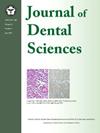Screening for levels of social difficulties and unemployment in head and neck cancer patients by University of Washington Quality of Life Questionnaire (UW-QOL): Current status and cut-off point establishment
IF 3.1
3区 医学
Q1 DENTISTRY, ORAL SURGERY & MEDICINE
引用次数: 0
Abstract
Background/purpose
Social function and employment are vital to the quality of life in head and neck cancer (HNC) survivors. This study aimed to (1) assess the status of social difficulties (including getting along with others, social participation and unemployment); (2) examine their associations with the University of Washington Quality of Life Questionnaire (UW-QOL); and (3) establish UW-QOL cut-off points for identifying social difficulties after primary treatment.
Materials and methods
The cross-sectional study was conducted at a medical center in Taiwan, involving HNC survivors under 65 years who completed primary treatments. Data collection included the UW-QOL, the “getting along” and “social participation” subscales of the WHO Disability Assessment Schedule 2.0 (WHODAS 2.0), employment status, and demographic and clinical characteristics.
Results
A total of 164 HNC survivors was recruited. Among them, 49.4 % reported difficulty in social participation, 20.7 % had difficulty getting along with others, and 25.6 % were unemployed. UW-QOL scores were highly correlated with the two social function subscales and significantly differed between employed and unemployed individuals. UW-QOL cut-off scores indicating mild to severe difficulty were 75.0, 73.3, and 63.9 for social participation; 63.9, 60.8, and 58.5 for getting along; and 76.8 for unemployment.
Conclusion
The study showed that social difficulties are a concern for HNC survivors. Importantly, the study provides strong evidence to support that UW-QOL can be used to concurrently assess for QOL and the main social difficulties through the cut-off points in UWQOL.
华盛顿大学生活质量问卷(UW-QOL)筛查头颈癌患者的社会困难和失业水平:现状和分界点的建立
背景/目的社会功能和就业对头颈癌(HNC)幸存者的生活质量至关重要。本研究旨在(1)评估社会困难状况(包括与他人相处、社会参与和失业状况);(2)研究其与华盛顿大学生活质量问卷(UW-QOL)的关联;(3)建立UW-QOL分界点,用于识别初级治疗后的社会困难。材料与方法横断面研究在台湾某医疗中心进行,研究对象为65岁以下完成了初级治疗的HNC幸存者。数据收集包括UW-QOL、世界卫生组织残疾评估表2.0 (WHODAS 2.0)的“相处”和“社会参与”分量表、就业状况、人口统计学和临床特征。结果共纳入HNC幸存者164例。其中,49.4%的人有社会参与困难,20.7%的人有与人相处困难,25.6%的人没有工作。UW-QOL得分与两个社会功能分量表高度相关,在就业者和失业者之间存在显著差异。表明轻度到重度困难的UW-QOL截止分数为75.0、73.3和63.9;63.9分、60.8分、58.5分;失业率为76.8分。结论社交困难是HNC幸存者关注的问题。重要的是,本研究提供了强有力的证据,支持UW-QOL可以通过UW-QOL的截断点来同时评估生活质量和主要社会困难。
本文章由计算机程序翻译,如有差异,请以英文原文为准。
求助全文
约1分钟内获得全文
求助全文
来源期刊

Journal of Dental Sciences
医学-牙科与口腔外科
CiteScore
5.10
自引率
14.30%
发文量
348
审稿时长
6 days
期刊介绍:
he Journal of Dental Sciences (JDS), published quarterly, is the official and open access publication of the Association for Dental Sciences of the Republic of China (ADS-ROC). The precedent journal of the JDS is the Chinese Dental Journal (CDJ) which had already been covered by MEDLINE in 1988. As the CDJ continued to prove its importance in the region, the ADS-ROC decided to move to the international community by publishing an English journal. Hence, the birth of the JDS in 2006. The JDS is indexed in the SCI Expanded since 2008. It is also indexed in Scopus, and EMCare, ScienceDirect, SIIC Data Bases.
The topics covered by the JDS include all fields of basic and clinical dentistry. Some manuscripts focusing on the study of certain endemic diseases such as dental caries and periodontal diseases in particular regions of any country as well as oral pre-cancers, oral cancers, and oral submucous fibrosis related to betel nut chewing habit are also considered for publication. Besides, the JDS also publishes articles about the efficacy of a new treatment modality on oral verrucous hyperplasia or early oral squamous cell carcinoma.
 求助内容:
求助内容: 应助结果提醒方式:
应助结果提醒方式:


